
Sweet red bean (adzuki or Aduki bean) soup is a popular dessert among the Chinese. One can find it hawked along the streets and served at grand Chinese banquets. I enjoy the distinctive aroma of red bean enhanced by the refreshing fragrance of chen pi (dried mandarin orange peel) wafting from a pot of boiling red bean soup. This is a family recipe of ‘Homg dou sar’ (Cantonese red bean soup). It is a slightly thick, silky smooth and creamy soup contrasted with steamed lily bulb to delight your taste buds and tickle your tongue and senses.
The secret to the silky, smooth creaminess is the addition of ‘alkali-glutinous-rice dumpling’ that breakdown the protein in Hong Dou. Alkali glutinous rice dumpling is another distinctive Cantonese dumpling. My youngest aunt always makes it for the Duanwu dragon boat festival and distributed her lovingly-made delicacy to the extended family. My family always set aside a few of these dumplings specifically to make red bean soup. The dumplings are cut into tiny pieces and dried thoroughly in the sun for future use.
This detoxifying soup is good for people who feel fatigued, have poor digestion and mucous due to digestive problems.
RECIPE
INGREDIENTS
• 1 teacup red beans
• 6 teacups hot water
• 1/3 piece Chen pi (dried mandarin peel) cut into smaller pieces
• 4 tablespoonful of dried lily bulbs
• 2 to 3 tablespoonful of dried alkali glutinous rice
• Sugar to taste
METHOD
1. Wash red bean clean and soak overnight.
2. Wash and soak dried lily bulbs for 30 mins. or until fully saturated with water before boiling.
3. Add soaked red beans, alkali glutinous rice, chen pi, about half of soaked lily bulb into hot water in a slow cooker and boil for 3 to 4 hours or until starchy ingredients have dissolved.
4. You can either steam the remainder of soaked lily bulbs in a steamer placed over the slow cooker until it is soft or add them into the red bean soup at the last 45 minutes of boiling together with sugar. (I used palm sugar cut into cubes.)
5. The soup is ready when it has thickened and the red beans, glutinous rice and lily bulbs added in at start of boiling have dissolved. The lily bulbs added in later should remain intact. Stir the mixture.
Benefits & Therapeutic properties
Centuries ago, Hippocrates advised, “Let food be your medicine and medicine be your food”. The Chinese also follow this food philosophy. In TCM, most food (including plain water) has therapeutic value when used appropriately.
RED BEAN (Vigna angularis Phaseolus)
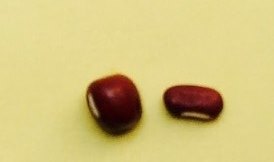 [left] Red bean (Hong Dou) and [right] small red bean (Chi Xiao Dou) are two different species of beans. Red bean is more spherical whereas small red bean is elongated.
[left] Red bean (Hong Dou) and [right] small red bean (Chi Xiao Dou) are two different species of beans. Red bean is more spherical whereas small red bean is elongated.
Hong Dou is eaten as food with therapeutic value whereas Chi Xiao Dou is included in herbal formulations as medicine.
In some parts of China, nursing mothers consume red beans. Let’s examine the goodness locked in the beans:
It is an excellent source of folic acid and protein. Folic acid plays a large role in cell growth and development, as well as tissue formation. Proteins do most of the work in cells and are required for the structure, function, and regulation of the body’s tissues and organs. It is needed to make hormones and enzyme. Red bean is also a good source of iron, magnesium, Zinc and potassium as well as fiber. It is a fairly good source of several B Vitamins. These nutrients are needed for production of energy, protein and red blood cells; normal nerve, muscle and heart function; healthy teeth, bones and immune system as well as hundreds of bodily processes such as detoxification, glucose and blood pressure control etc.
From TCM perspective, Hong Dou replenish blood, dispel dampness by promoting diuresis, strengthen the digestive process, reduce swelling and eliminate toxins. It is recommended for dealing with rashes, pimples and boils as well as dampness such as water-retention.
If you have edema (water retention), add a teaspoon of small red bean (Chi Xiao Dou) because it is a more powerful diuretic than red bean (Hong Dou).
CHEN PI (DRIED AGED MANDARIN ORANGE PEEL)
TCM consider dampness such as water retention and excessive white phlegm or mucous is associated with Kidney Yang deficiency, Spleen Yang deficiency, Blood stagnation and Qi stagnation leading to sluggish circulation being unable to circulate liquid effectively. Chen pi is used to invigorate circulation and dispel phlegm and water retention. It also invigorates digestion.
LILY BULB
Lily bulb (Bai He) is calming making it suitable for irritability and restiveness, clears internal heat and treats cough with large amount of phlegm. The herb helps with insomnia and heart palpitations. It acts on the Lung and Heart meridians.
GLUTINOUS RICE
It acts on the spleen and stomach meridians. These two meridians are involved in the digestive system as well as circulatory system. They dominate the limbs, sending Qi (energy or life force) and Blood to the arms and legs, warming them and supporting their function.
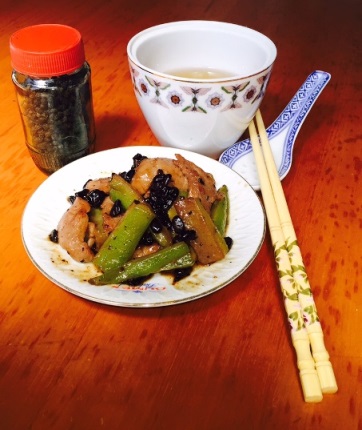

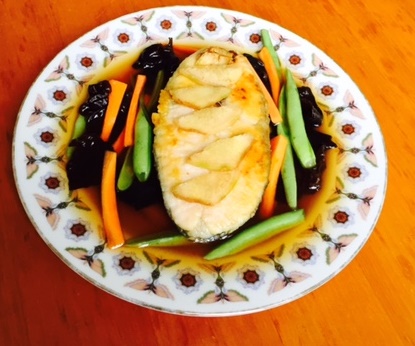
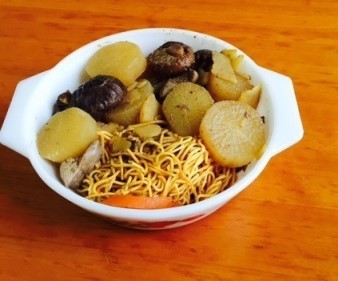
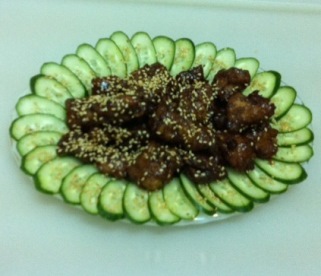

 [left] Red bean (Hong Dou) and [right] small red bean (Chi Xiao Dou) are two different species of beans. Red bean is more spherical whereas small red bean is elongated.
[left] Red bean (Hong Dou) and [right] small red bean (Chi Xiao Dou) are two different species of beans. Red bean is more spherical whereas small red bean is elongated.